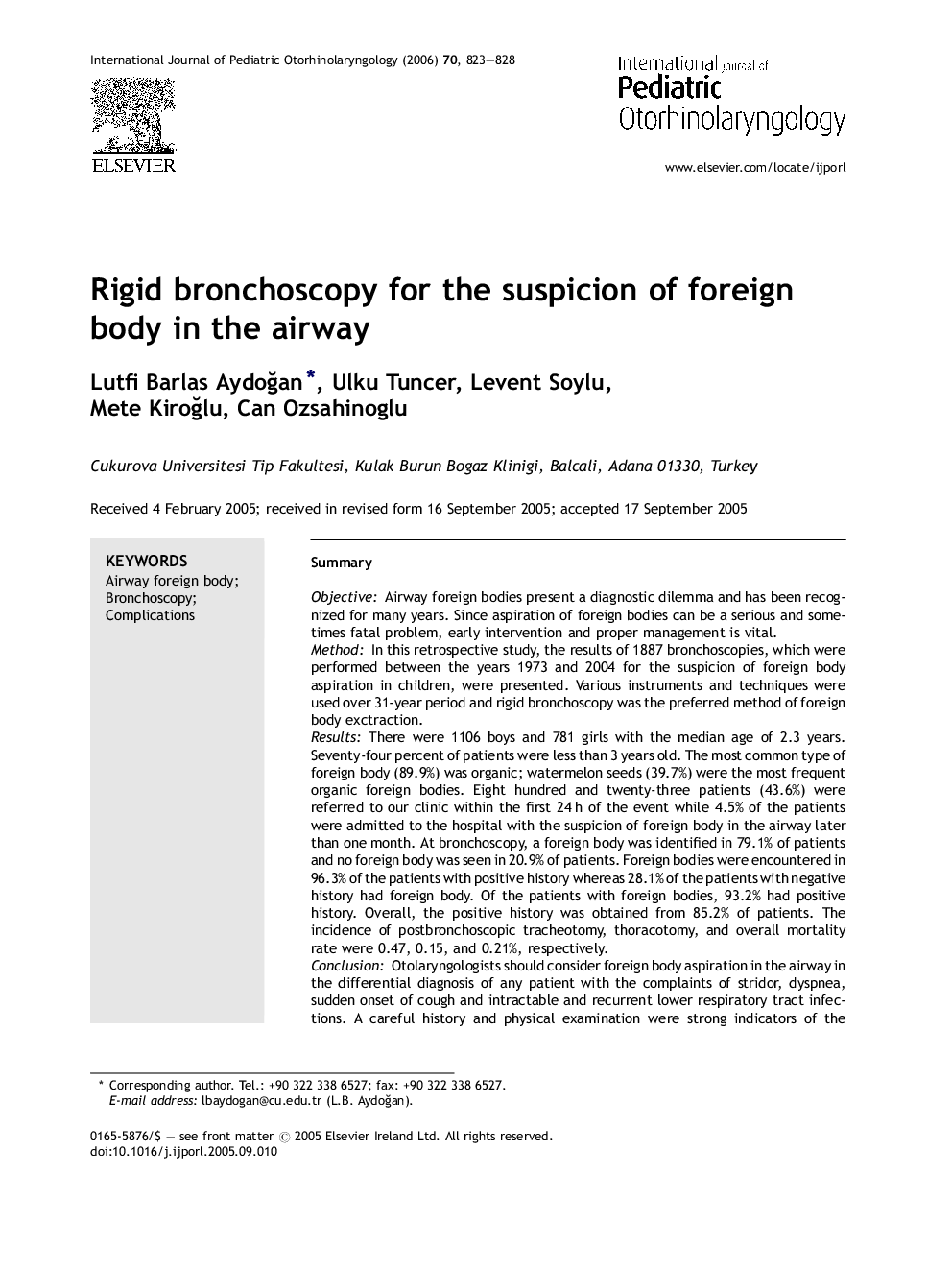| Article ID | Journal | Published Year | Pages | File Type |
|---|---|---|---|---|
| 4114684 | International Journal of Pediatric Otorhinolaryngology | 2006 | 6 Pages |
SummaryObjectiveAirway foreign bodies present a diagnostic dilemma and has been recognized for many years. Since aspiration of foreign bodies can be a serious and sometimes fatal problem, early intervention and proper management is vital.MethodIn this retrospective study, the results of 1887 bronchoscopies, which were performed between the years 1973 and 2004 for the suspicion of foreign body aspiration in children, were presented. Various instruments and techniques were used over 31-year period and rigid bronchoscopy was the preferred method of foreign body exctraction.ResultsThere were 1106 boys and 781 girls with the median age of 2.3 years. Seventy-four percent of patients were less than 3 years old. The most common type of foreign body (89.9%) was organic; watermelon seeds (39.7%) were the most frequent organic foreign bodies. Eight hundred and twenty-three patients (43.6%) were referred to our clinic within the first 24 h of the event while 4.5% of the patients were admitted to the hospital with the suspicion of foreign body in the airway later than one month. At bronchoscopy, a foreign body was identified in 79.1% of patients and no foreign body was seen in 20.9% of patients. Foreign bodies were encountered in 96.3% of the patients with positive history whereas 28.1% of the patients with negative history had foreign body. Of the patients with foreign bodies, 93.2% had positive history. Overall, the positive history was obtained from 85.2% of patients. The incidence of postbronchoscopic tracheotomy, thoracotomy, and overall mortality rate were 0.47, 0.15, and 0.21%, respectively.ConclusionOtolaryngologists should consider foreign body aspiration in the airway in the differential diagnosis of any patient with the complaints of stridor, dyspnea, sudden onset of cough and intractable and recurrent lower respiratory tract infections. A careful history and physical examination were strong indicators of the diagnosis and raised the index of suspicion of an aspirated foreign body. Timely intervention with the experienced surgical team would decrease the complication rate and mortality rate. However, prevention of aspiration with the education of parents and caregivers is very important.
